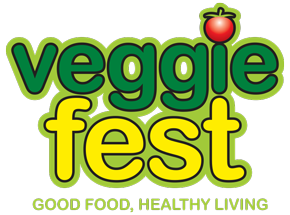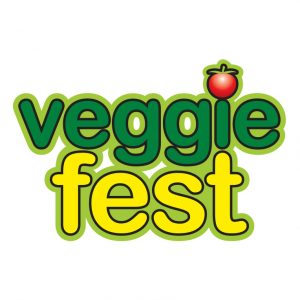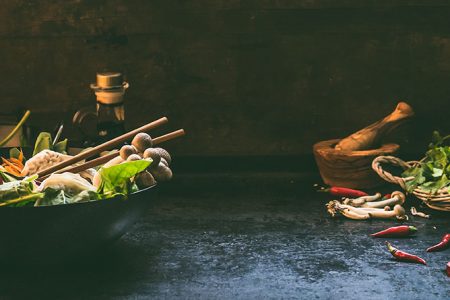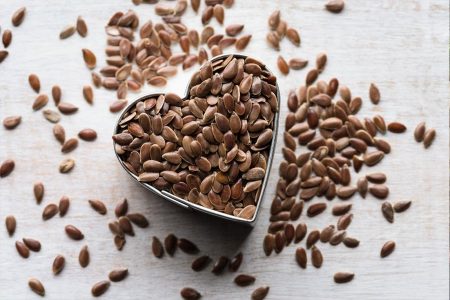When the air is nippy, and we’re looking for ways to keep warm, a time-honored tradition is to curl up on a favorite chair and heat ourselves inside-out with a delicious, hot beverage. Holding a cup of tea, cider, coffee, or hot chocolate in hand, we can sip away the cold.
For hundreds of years, people all over the world have enjoyed herbal tea blended from roots, dried berries, flowers, and leaves. Between the 17th and 18th centuries, exotic exports of coffee, tea, and chocolate began to spread throughout Europe and eventually found enthusiasts in North America.
Although water is the number one beverage consumed in the world, tea—whether white, green, or black—runs a close second. Even more popular than coffee, the origins of tea can be traced to the region where India, Burma, and China meet. No one is certain when the first leaves were brewed, but evidence suggests that tea drinking first began in China and spread to the rest of Asia.
Ceremony has flourished around the tea industry, from the selection of tea leaves to the process of brewing, serving, and even drinking. The ancient tea ceremonies of Japan and China, as forms of art, may seem at odds with today’s focus on things instant and easy. However, we may be unaware that we have invested ceremony into our own, private way of drinking a favorite hot beverage. Many of us enjoy a specific way of preparing our drinks. We may be particular about using a favorite mug, and we may even have a designated chair in which to sit, drink, and reflect. This, my friends, is ceremony at its every-day best.
A fun fact: Today in China, people enjoy drinking plain hot water. Whereas those in the West carry around cold water bottles, the Chinese drink from thermoses of hot water. They believe that hot water promotes health by balancing the yin and yang in the body.
No matter where you may live on this beautiful planet of ours, the Veggie Fest team has curated some of our best recipes for your delight—to be enjoyed throughout the wintery days ahead.
Dalogona Coffee
This popular Korean beverage is made by whipping together instant coffee, sugar and hot water until thick and frothy. The froth is then spooned on top of milk—oat, soy, rice, or almond—and served either hot or cold. Interestingly, the drink became very popular during the Covid-19 pandemic because people were looking for ways to make their favorite coffee drinks at home. You-tube videos filming the process went viral, and the rest of the world caught onto the joys of drinking this beverage. Why not give our delicious recipe a try?
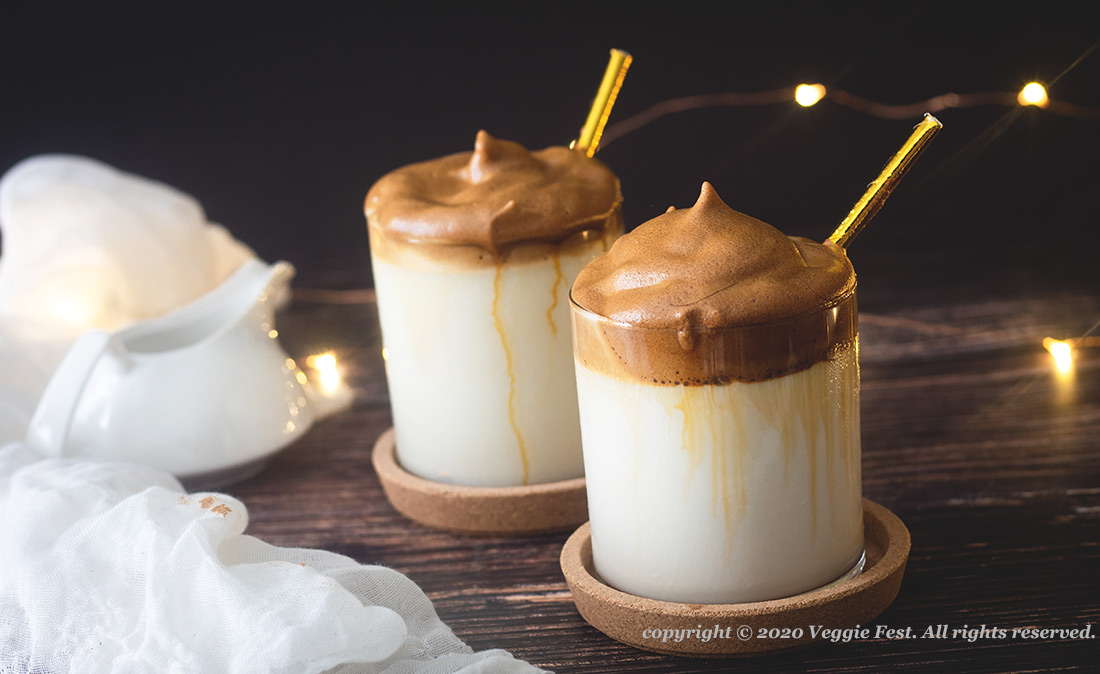
Dalgona Coffee
Spiced Apple Cider
Spiced apple cider or wassail is a drink associated with Christmas. Traditionally, this spiced beverage was served in a bowl with a cooked whole apple or a piece of toast. The word wassail comes from an old English phrase, waes hael, meaning good health. The drink was served at harvest time when people would drink it in a ritual asking for a good apple harvest. Our Wassail recipe incorporates oranges and clove. If you want to serve it in the traditional manner, score the top of an apple with an X and roast them in a 375° F (190° C) oven in a glass oven-proof pan for 45-50 minutes, until the skin begins to split. Serve the wassail in a bowl with a roasted apple, some orange or lemon slices, and a cinnamon stick. This is our recipe (without the roasted apple):
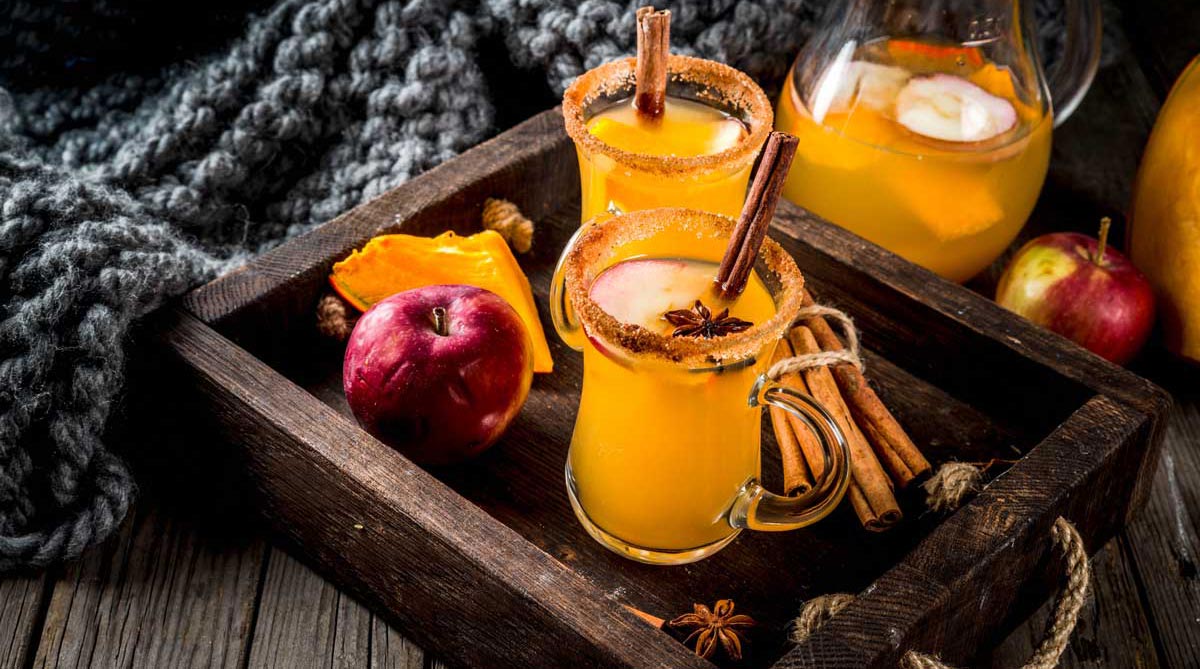
Spiced Apple Cider
Chai
In India, everyone drinks chai. This spicy beverage is generally made with cardamom, sugar, and milk. Recipes vary, and every family has a favorite combination of spices—from cardamom, ginger root, peppercorns, cinnamon, and cloves. Chai comes from the Chinese word cha, meaning tea. Legend says that chai dates back 5,000 years when a king requested a healing ayurvedic drink. (Ayurveda is an ancient, Hindu medicinal system). Even today, the tea may be created from spices and dried fruit brewed together in hot water. In the eighteenth century, after black tea became popular in India, it was combined with spices to create the beverage we’re familiar with today. Of course, our recipe collection would not be complete without our favorite Veggie Fest chai.
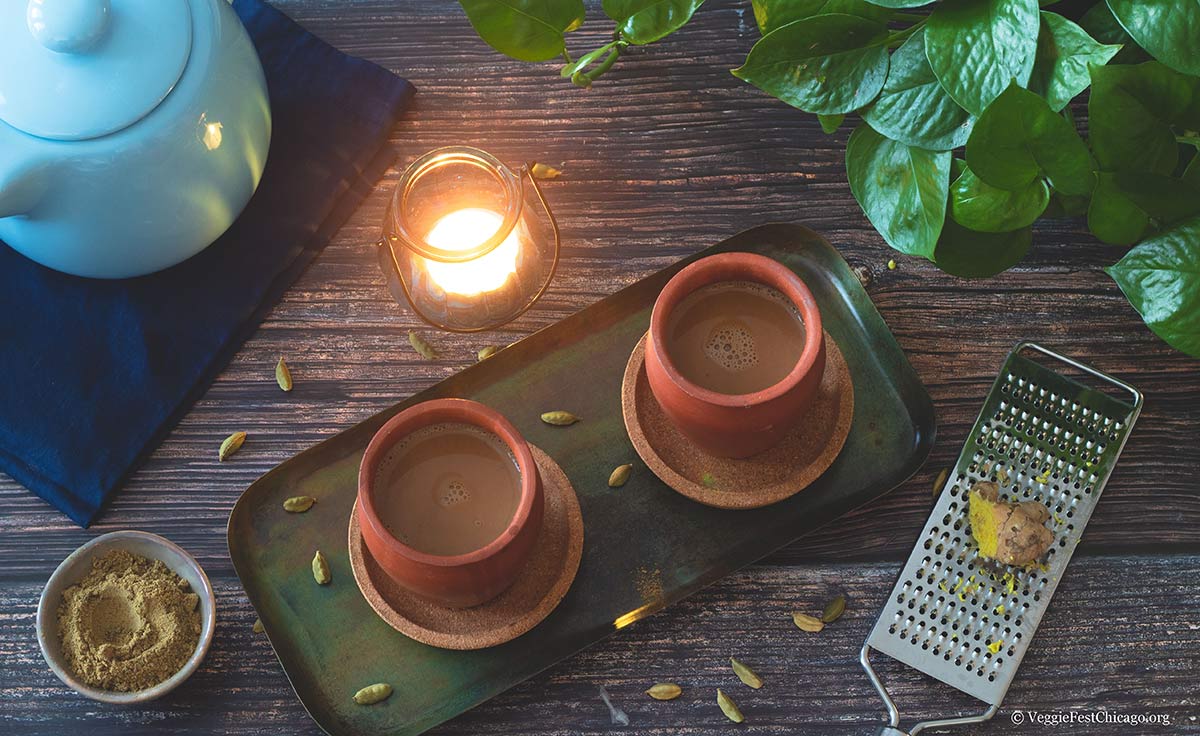
Indian Vegan Masala Chai
Hot Chocolate
The kid in all of us enjoys hot chocolate, a beverage that hails back to 500 BCE in Mexico when the Mayans created their version from ground cocoa seeds mixed with water, cornmeal, and hot chili peppers. Although this concoction was brewed in a pot, it was served cold. Two thousand years later, in the 1500s, people started drinking chocolate in Spain—minus the hot peppers—when Cortez brought it back from Mexico. However, it wasn’t until the 18th century that chocolate finally make its way throughout Europe and North America.
Cocoa began to look like the drink we are all familiar with after a traveler returned from Jamaica to England with a recipe using milk instead of water. People in England agreed with the traveler that this made a tastier drink. Eventually, preparing hot chocolate with milk or cream became a favorite way to enjoy the beverage worldwide.
In the United States, cocoa is typically much thinner than its European counterpart, and is often made from an instant mix found in small packages. For a mocha twist, try our creamy Brazilian Café Cocoa made with chocolate, milk, and coffee.
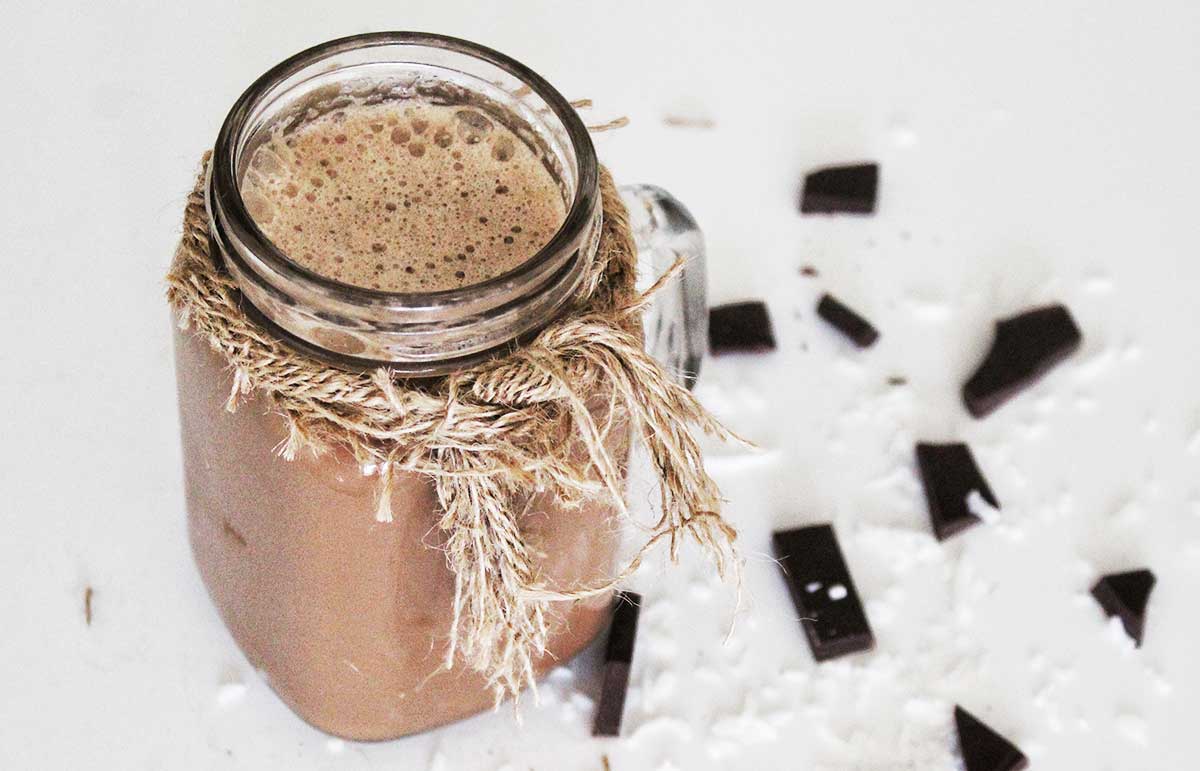
Hot Chocolate
Health Promoting Beverages
For those who want the creamy consistency of hot chocolate in a drink that promotes health, try a warming cup of Golden Milk, made with plant-milk and turmeric! This vibrant blend of roots, herbs, and spices supports the immune system, stimulates the digestive system, and eases inflammation. According to Healthline.com, golden milk may also help improve brain function, protect from heart disease, and may lower blood sugar levels. Turmeric has antibacterial, antiviral and antifungal properties, but when combined with ginger root, cinnamon, and cardamom, also creates a delicious, golden treat.
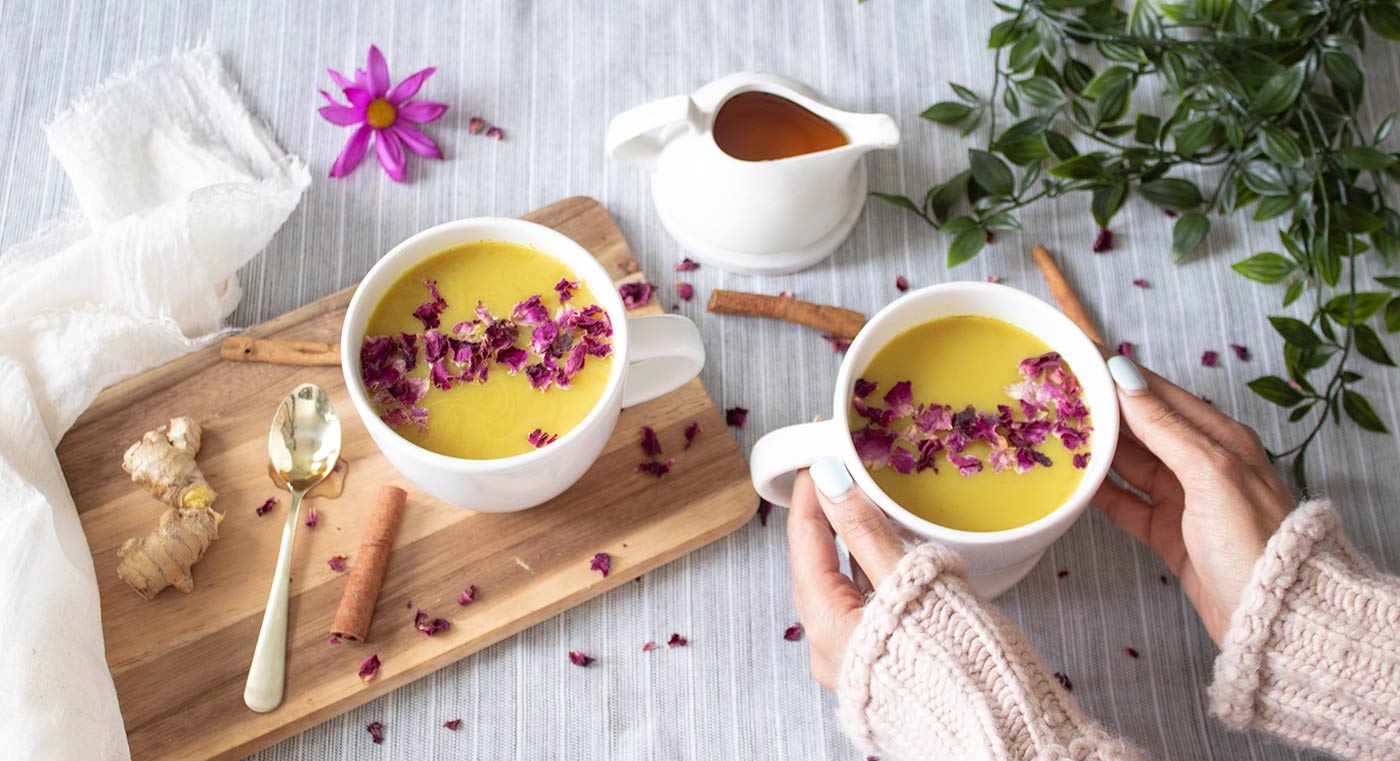
Golden Milk
Elderberry Tea
Bluish-black elderberries are antiviral, antibacterial, and anti-inflammatory. They can be used to make jam, jellies, sauces, pies, syrups, or in our case, teas. One cup of fresh elderberries contains 10 grams of fiber and 58% of the recommended daily vitamin C. Clinical research suggests that if taken within 48 hours of the first sign of the symptoms of a cold or flu, elderberries can help in reducing symptoms and the length of the illness. During autumn and winter, drink a cup of hot elderberry tea at any time of day, especially if you are feeling under the weather. With or without honey, it’s a relaxing tea that helps to keep the winter blues away.
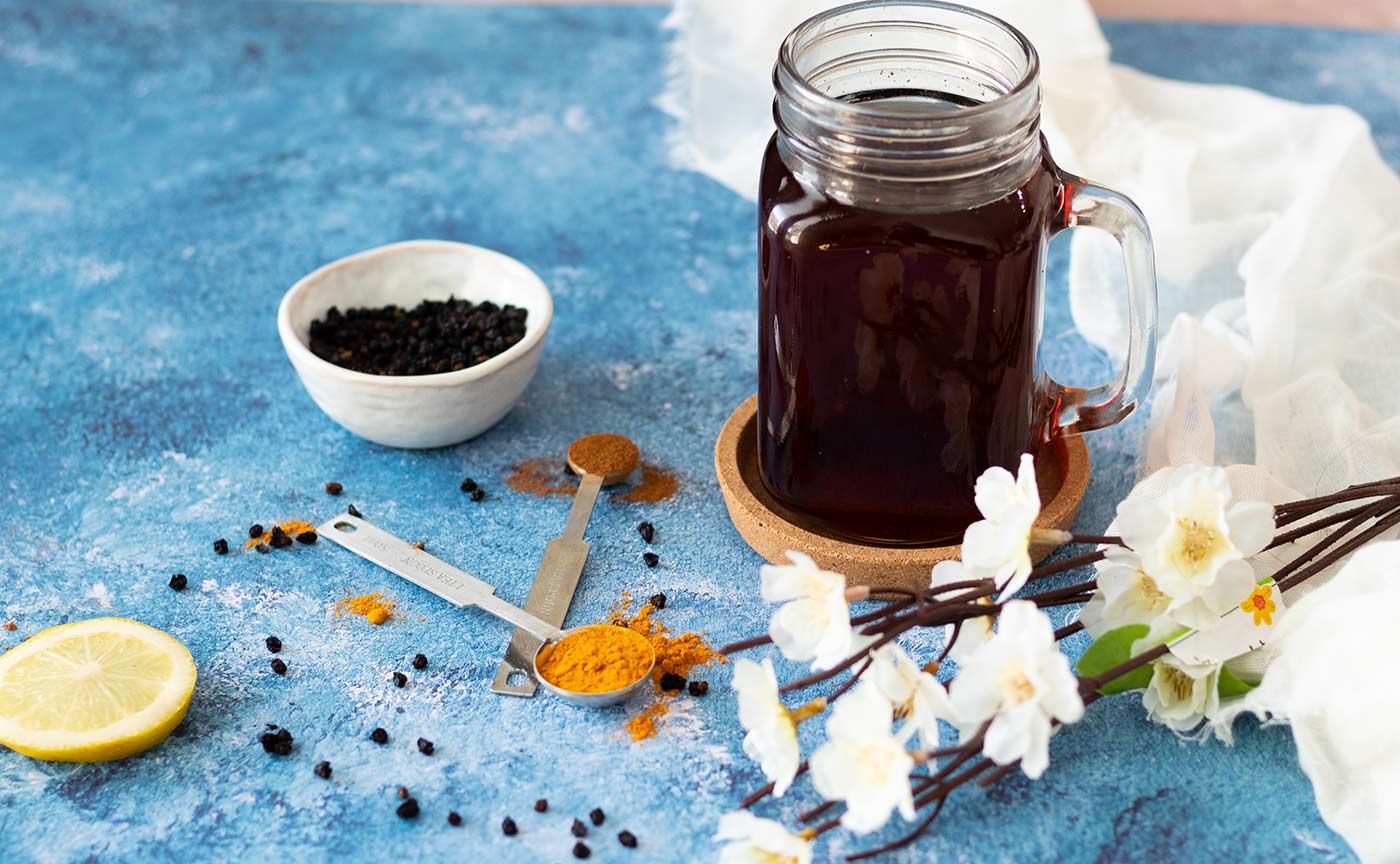
Elderberry Tea
As you’re sipping a favorite hot beverage, we wish you good health and cheer while the cold winds blow this winter!
